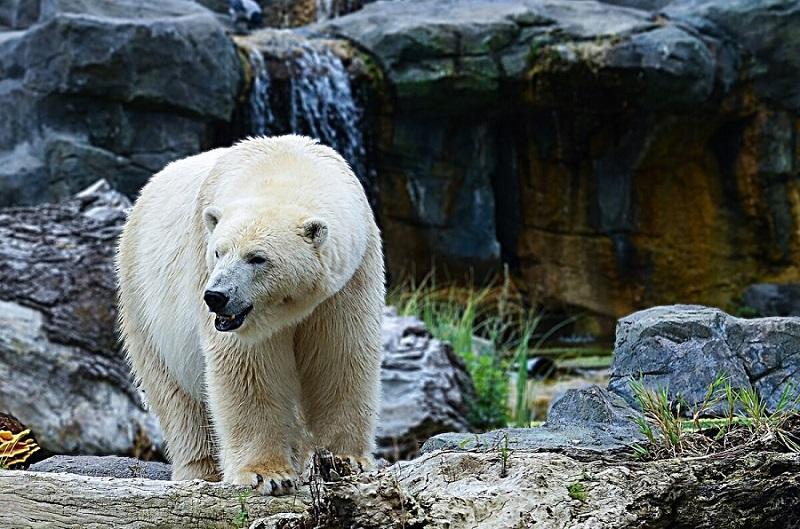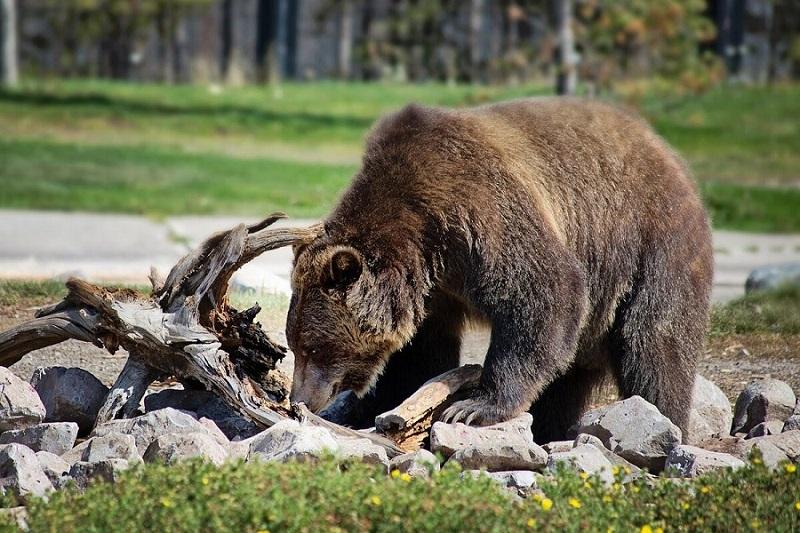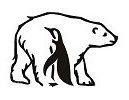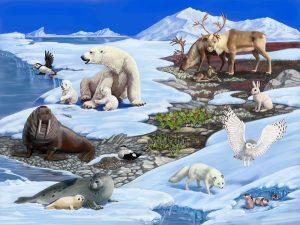
Polar bear
Big and even bigger
The white and brown bears had a common ancestor, from which the clubfoot separated about 500 thousand years ago. Today we know them as completely different animals. How do they differ? Well, except for the color of the coat, of course.
Both clubfoot are the largest in the entire bear family.
However, the brown one is inferior in weight and size to the white one, which proudly bears the title of the largest terrestrial predator among all mammals that live on land.
Kamchatka bears and Alaska (kodiaks) can weigh more than the average brown bears, up to 600-700 kg or more. However, white people have real giants weighing from 800 kg. The difference, of course, is not significant. But in the “fight” every kilogram matters.
Brown bears are more strongly built and have a noticeably protruding hump in the withers area. It contains the secrets of the bogatyrskaya silushka. The hump consists of many muscles, with which the brown is able to deliver powerful blows with its front paws.
Arctic giants, despite their larger size, have a more slender physique and differ from brown ones by their elongated neck, with which they deftly snatch seals from the “holes”.
White and brown have 42 beautiful teeth in their mouths. However, the teeth of a polar bear are a little sharper, because they are designed for efficient cutting of meat. Since brown clubfoot are more vegetarians than predators, their teeth are less sharp, more suitable for “grinding” vegetable food.
If you look at the claws of a brown bear, you can easily lose consciousness. They are big, they grow up to 8-10 cm. It is not only a reliable tool for uprooting stumps, but also a powerful weapon.
The claws of a polar bear are thinner and slightly shorter, but at the same time they are sharper, they help to move confidently on the ice and hold slippery prey.
What is the situation with endurance

The brown bear
Both clubfoot are very hardy, but each in a specific habitat. Brown bears are able to run at the speed of a horse and maintain this pace for quite a long time. Endurance helps them to take part in prolonged fights with their own kind or with large prey like moose or bison.
Polar bears avoid excessive physical activity because they quickly overheat on land. Their thermal insulation is to blame. They can cover huge distances, but on foot — he runs extremely reluctantly and only for short distances.
But the polar bear has no equal in the water. Brown clubfoot, of course, swim well too, but where do they get to the owner of the Arctic? Its webbed feet make it easy to swim twice as far.
Brown bears fatten up for the winter to spend a period of blizzards and snowstorms in their den. They live for months at the expense of accumulated fat reserves, spending a minimum of energy.
Polar bears mostly only have pregnant females in their dens, the rest often remain active all year round. Polar bears reign supreme in the cold Arctic, because there are no equally large and strong predators among the ice capable of competing with clubfoot.
Brown bears have to share their possessions with other dangerous predators. However, they are natural fighters. Even a dozen wolves will not displace a large Mikhalych. And not every tiger is able to cope with it.
From time to time, brown bears cross paths with white ones. Such meetings are extremely unpredictable. In the happy ending stories, pussy pups are born — hybrid cubs that inherited the genes of both clubfoot.
But it can also come to a fight. Moreover, brown bears usually chase whites from their territory. And brown bears do not climb the ice sheet. And polar bears are not particularly eager to get involved in a conflict on earth.
This is also due to the enormous strength of brown bears, their stronger physique and exceptional endurance. Polar bears quickly overheat, so they have less chance of winning in the same weight category on earth.


